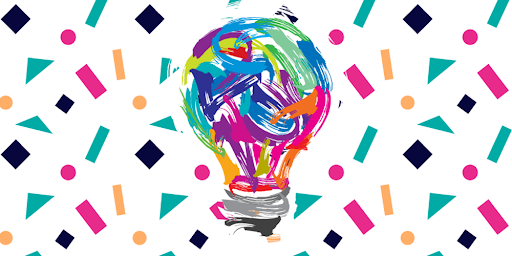Innovation in Isolation: How to Trigger your Creativity
“In order to be open to creativity, one must have the capacity for constructive use of solitude. One must overcome the fear of being alone.” Rollo May
Our journey towards the isolation economy is well underway as workers are getting increasingly comfortable working from home. Unfortunately, however, as we work in isolation, we miss out on some of the positive elements of workplace interaction and collaboration that we have taken for granted. As working from home becomes the new normal, we will need to relearn many of our previous collaborative activities and make them as productive they used to be, while secluded in our homes.
Nowadays, we are forced into working from home by a once-in-a-generation pandemic, but many of our isolation behaviours will persist once the coronavirus is behind us. Even though remote work has certain advantages and may also enhance productivity in many respects, innovation is one thing that becomes harder to do and may suffer as a result.
There has a general feeling that more meetings have occurred since the isolation began, more than we used to before. During the first week, it was about catching up with everyone to talk about the latest news, vent and get support, but then by the second week, it became apparent that people were scheduling meetings to avoid being alone.
In our modern lives with never ending social media and on demand entertainment, we had already excelled in avoiding being alone, especially when these services use psychological triggers to keep us always-on and engaged in a continuous content consuming frenzy. We have started to hate being alone according to a 2014 study: “many preferred to administer electric shocks to themselves instead of being left alone with their thoughts” for even 6–15 minutes.
Innovation is difficult in Isolation
Innovation in isolation is hard because human creativity needs idea sharing and interaction to flourish. Breakthroughs never come from lone inventors who toil alone in a dusky lab. Instead, they thrive when ideas are shared, challenged, and refined. For this reason, local coffee shops and office cafeterias have always been hubs of creativity and innovation.
Increases in population density have always led to a higher rate of idea generation, productivity, and economic output. Cities are where innovation happens, and this is due to the increased opportunity for the exchange and clash of concepts. The ability to share ideas is the primary reason innovation is localized. Silicon Valley and Seattle have become the hotbeds for technology innovation. Similarly, other cities have become centres for innovation for automobiles, banking, financial services, and other industries.
Innovation only happens when knowledge builds on knowledge and ideas build on ideas. When you are working from home, you have fewer collaborative encounters, and the rate of innovation suffers.
When workers are isolated, co-workers are unable to have unstructured and spontaneous discussions that serve as the root of innovation. Yes, you can have productive meetings using Zoom. But the casual conversation you have while walking in and out of a conference room or meeting someone in the breakroom doesn’t happen, and those are the chance encounters that often lead to flashes of creativity and innovation.
But innovation is still possible. Today, even potential vaccines for coronavirus, designed to end our solitude, are being developed in isolation. But vaccine development is progressing at a rapid rate because scientists around the world are and sharing their research. This collaboration is critical for allowing advances to being built on top of one another.
Creativity and the Science Behind It
There is solid evidence that proves why solitude, if harnessed mindfully, can improve our creativity in everyday life. And it all starts with brain waves.
For instance, when we’re in deep sleep, the brain enters into the Delta wave, which is an unconscious state when repair and healing occur. If we move towards consciousness, the next wave is Theta, which activates during light sleep. One is usually in Theta just before sleeping and just after awakening. While these waves are fantastic for random creations and ideas (remember that crazy dream you had the other day?), we can’t easily enter them at will or control them.
On the opposite end, we have Gamma waves, which represent the brain processing information and learning with intense focus, and Beta waves, which is the reductive state of mind — alert and focused. We’re operating in a Beta state for most of our day, making reductive decisions and executing.
Alpha Power
In the middle of these two extremes, we have the Alpha wave, which is produced when the brain is in a relaxed, unfocused state usually associated with being awake but idle (i.e. not concentrating on any specific thing). Alpha waves are correlated with creativity since creativity requires expansive thinking instead of reductive. According to a 2015 study, researchers could trigger a surge in creativity if they specifically focused on enhancing alpha waves. In this study, they used electrical triggers, but it’s widely accepted that meditation and mindfulness also work in getting the brain in an Alpha state.
And herein lies the magic. We can actively try to influence our brains to produce alpha waves for creative thinking and problem solving. Think of the places where you usually get your best ideas. For most people, the answer is while taking a shower and lying in bed just before going to bed. We’re now isolated in potentially the most alpha-inducing environment we could be. But we need to see past the confinement and into the opportunity that’s right in front of us.
How the Internet Came to Life
There are ways you can create massive and world-changing innovations while working from home, but you need to be deliberate about it. Since you will always need collaboration and idea-sharing for innovation to happen, you need to learn how to do so without the benefit of a physical interaction.
The best way to innovate in a remote environment is by creating a community of people who work on solving a problem independently, but collaboratively. Such communities, called Networked Improvement Communities, have been responsible for some of the most breathtaking innovations. As an example, take the development of The Internet, the most significant creation of our time.
The Internet was created through idea sharing and networked improvement. Designed by a group of pioneers working independently across universities and research institutions around the world, it was driven by a common desire to have different computers connected to each other. Creating the Internet required a high degree of information sharing, and its development was guided by a manifesto that was adopted voluntarily by a diverse set of innovators who shared in the common goal.
Networked improvement communities require a shared goal or shared area of interest and require multiple people working, usually independently, toward developing solutions to achieve the common goal—the communities need to agree to share progress with others. The network as a whole then uses what they learn from each member, and this boosts the collective knowledge of all participants and gets the entire community closer to achieving the shared goal. This is how breakthroughs are most likely to occur.
Forward-thinking organisations across health care, education, technology, and other sectors have created Networked Improvement Communities to boost innovation. Understanding and implementing these innovation communities in your organization can enhance your ability to develop significant new offerings that can change the world.
Take that time for yourself. Just enjoy the silence or do some meditation. If the fancy takes it, jot some things down or paint your wall or discuss within yourself how the world might be a better place. It is in these moments that we find clarity, unexpected solutions and a childlike wonder at how we ourselves are all we need. Let your imagination take you there. Don’t force it.
Given our current situation knowing that your colleagues or employees are best suited for this new scenario we find ourselves in. Finding the right talent, the best fit for the job and your organisation can be a very challenging task. It is now important to find out whether your managers or your team is well-equipped of working together from various locations. It requires deep knowledge of their personalities, strengths, weaknesses, interests, work style and other characteristics. Our technology and solutions will do the work for you, helping you discover if your people are resilient during times of hardship, if they are autonomous, if they are team players, without actual human contact. Given that our platform is cloud-based, everyone can use it from home as well. Humanity finds itself at a crossroad for various reasons now, why not help people discover and develop themselves from the comfort of their own homes?
Request a free demo:

Sources:
https://medium.com/navivest/harnessing-the-benefits-of-isolation-for-innovation-30a9a3fec638
https://www.forbes.com/sites/kmehta/2020/05/04/innovation-in-the-isolation-economy/#6dd7f7204643
https://yourstory.com/2020/04/innovation-critical-isolation











